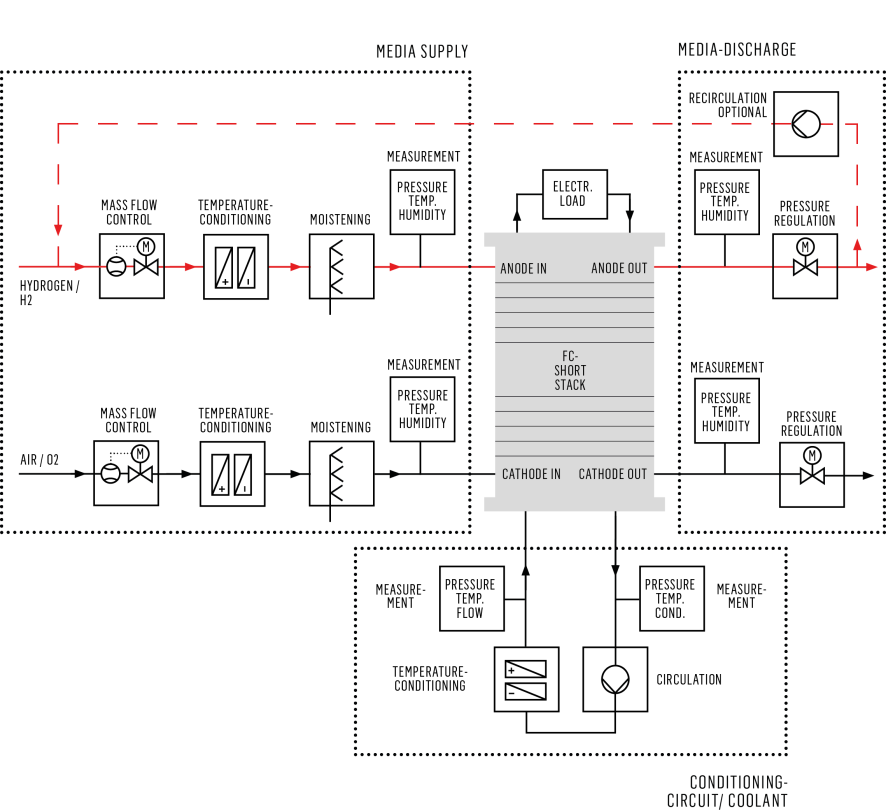FUEL CELL-STACK TESTING
PRECISE AND DYNAMIC AT THE SAME TIME
Tailor-made test benches for fuel cell short stacks. Reproducible Testing in the developmente stage.
Highly efficient fuel cell systems play an essential role with regard to future drive concepts. The reproducible testing of complete fuel cell systems as well as the examination of individual stacks and BoP components play a decisive role in development. With tailor-made test benches for fuel cell short stacks, KS offers the necessary flexibility to deal with a wide variety of scenarios and test tasks. The system configuration is adapted to the specific application with regard to the required operating ranges as well as the required accuracy and dynamics




